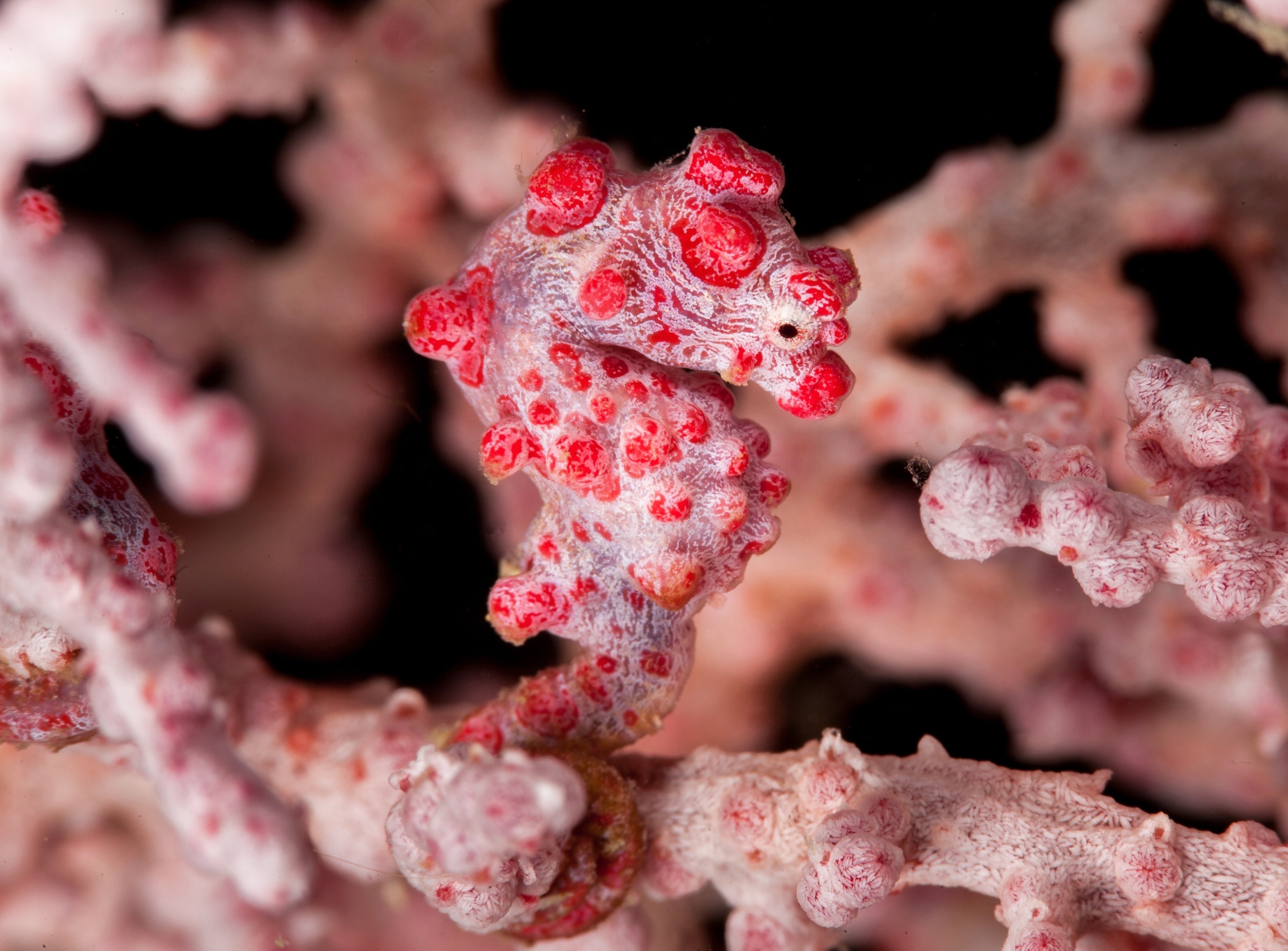Tiny, strange-looking, and almost impossible to spot in the wild, pygmy seahorses are one of nature’s most impressive masters of disguise.
No bigger than your thumbnail, these tiny creatures cling to coral in the western Pacific Ocean. But don’t expect to find one easily – they’ve practically vanished into their surroundings.
What makes them nearly invisible isn’t just luck. It’s the result of millions of years of extreme evolutionary fine-tuning.
A recent study finally cracked part of the code behind camouflage in pygmy seahorses, revealing surprising clues in their DNA.
Pygmy seahorses: Built for invisibility
Pygmy seahorses were not found until 1969, and it’s no surprise they remained concealed for so long. Their bodies have tiny bumps that are the same texture as coral polyps. They’re colored just like the coral.
The snouts of pygmy seahorses are even short and stubby – like the small coral knobs they call home. They do not resemble their larger relatives, which have tube-like, long snouts.
Pygmy seahorses appear to be the same as the coral they attach themselves to, blending as though they are a part of it. Their camouflage is so strong that in the wild, they are virtually untrackable, and keeping them captive has proven to be a challenge.
Genetic secrets revealed
The study was led by researchers from the University of Konstanz in Germany and the South China Sea Institute of Oceanology in Guangzhou, China.
The team set out to answer a question that had puzzled scientists: How does a pygmy seahorse end up looking so much like coral?
To find out, the researchers studied the animals’ gene activity at different stages of development. They focused on one odd feature – the pygmy seahorse’s short snout.
Normally, all seahorses start off with a baby-like face. But as they grow, most develop the long snout that gives them their name. Pygmy seahorses never go through that growth spurt.
“Normally, a combination of different genetic components causes the snout of a seahorse to grow proportionally faster than other parts of the body from a certain age and thus become elongated,” noted study lead author Professor Axel Meyer.
“In the pygmy seahorse, however, we have now discovered that these different growth rates are suppressed because the hoxa2b gene has been lost.”
A childlike stage of life
The team confirmed the gene was missing by using CRISPR gene-editing technology on zebrafish. The experiments showed that when the hoxa2b gene was removed, the fish retained shorter, baby-like features – just like the pygmy seahorse.
“The head of the pygmy seahorse remains stuck in the ‘childlike’ earlier stage of development. This shape mimicks the coral perfectly and makes it more difficult for predators to detect these animals on the corals,” explained Professor Meyer.
“With its short snout, the pygmy seahorse merges visually with the coral. A long nose, on the other hand, would stand out and make camouflage less perfect.”
Genes tied to the immune system
The snout isn’t the only thing that changed. The study also revealed that pygmy seahorses have lost a huge number of genes compared to their larger relatives. That includes genes tied to the immune system.
The researchers believe this happened for a reason. Coral can release toxins, and being able to tolerate those chemicals may actually help pygmy seahorses avoid harmful bacteria. In that case, a strong immune system isn’t as necessary.
“This is probably due to the fact that coral toxins can be tolerated by the pygmy seahorses and even provide them with protection against microbes. Consequently, their immune system no longer needs the corresponding genes,” said Professor Meyer.
Benefits for reproduction
There’s another twist. In seahorses, it’s the males that carry the eggs in a special pouch. Normally, the immune system would attack anything inside the body that doesn’t match its own cells.
But if the immune system is weakened or altered, the male can carry the eggs without triggering a rejection.
“As, however, the eggs are not genetically identical to the cells of the male’s body, they would normally be attacked as foreign tissue. Losing immune-system genes was necessary to weaken the corresponding immune response,” said Meyer.
Evolution of the pygmy seahorse
The changes seen in pygmy seahorses are an example of evolution at work. Some traits disappear, while others get stronger. Over time, these changes add up to something completely new.
“In all of these adaptations, we see examples of massive gene losses and a seemingly paradoxical release of evolutionary creativity, which ultimately explains the unusual appearance and remarkable biology of these creatures,” said Professor Meyer.
Pygmy seahorses may be small, but they offer big insights into the surprising ways that life can evolve on Earth. By losing what they did not need to retain, these organisms developed something remarkable – the capacity to all but disappear in their own environment.
The full study was published in the journal Proceedings of the National Academy of Sciences.
—–
Like what you read? Subscribe to our newsletter for engaging articles, exclusive content, and the latest updates.
Check us out on EarthSnap, a free app brought to you by Eric Ralls and Earth.com.
—–
